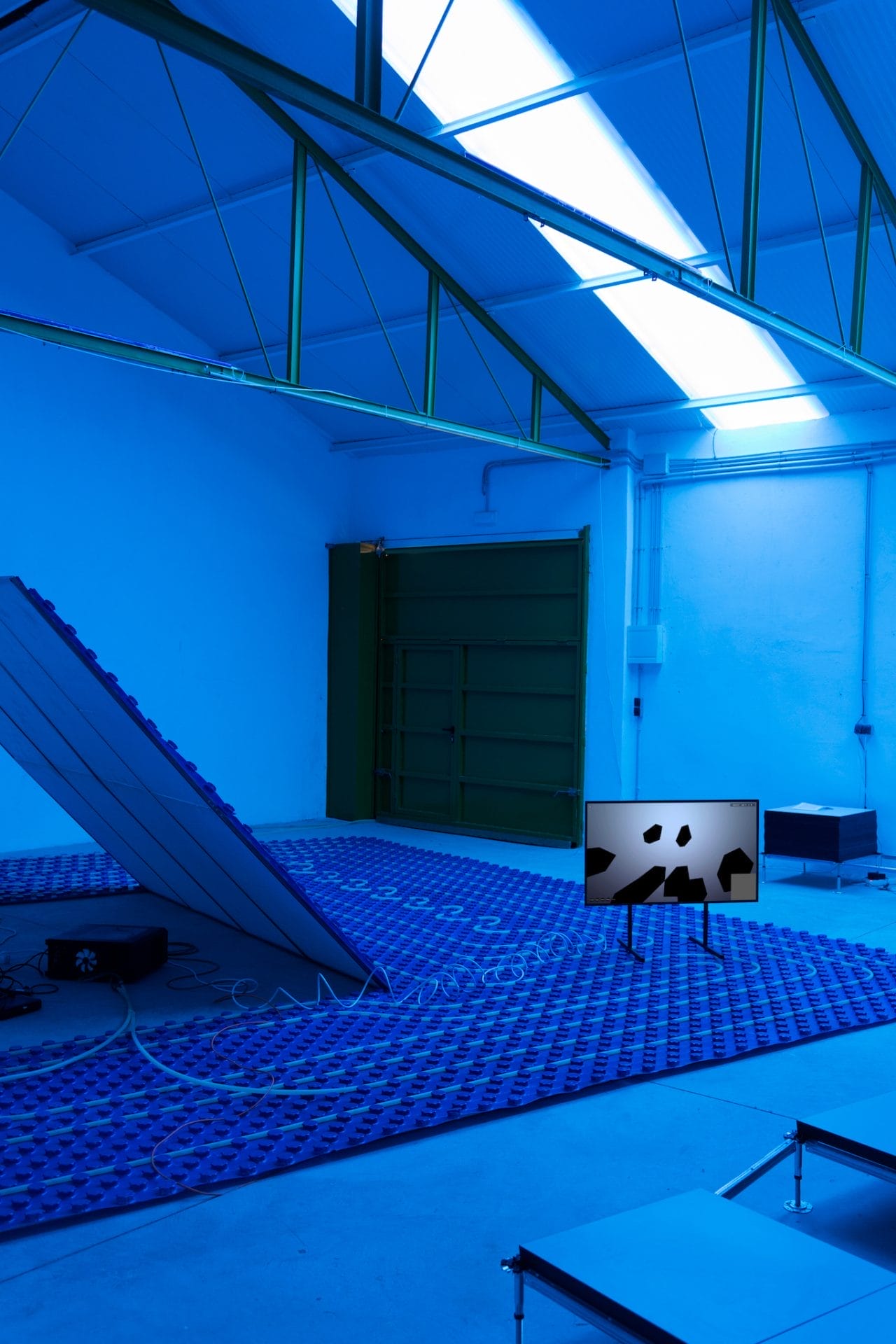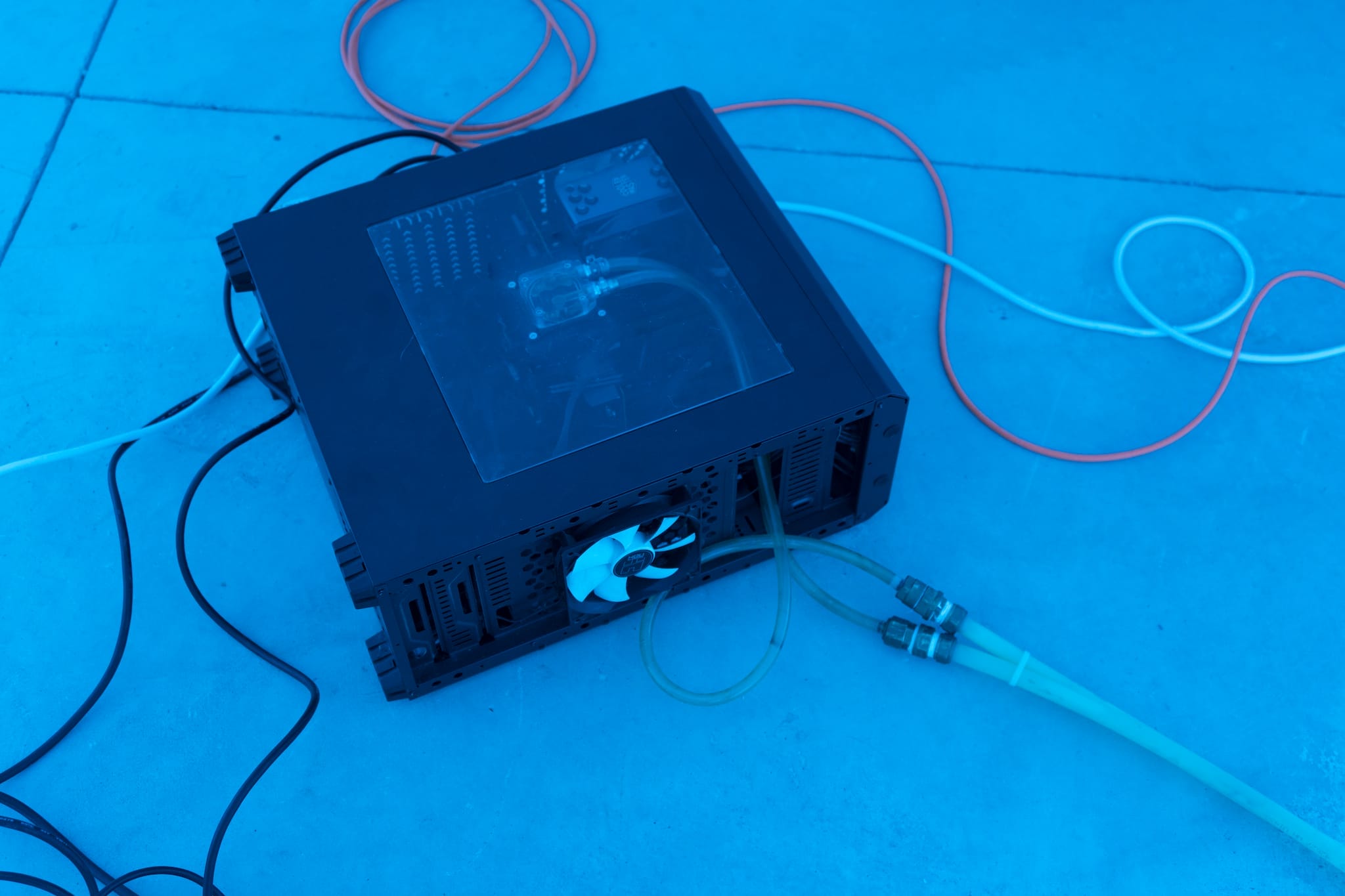
Mario Santamaría, When the walls stop crying, at Nave Sierra, Madrid
“When the walls stop crying” by Mario Santamaría, curated by Aida Salán and Guillermo Esteban, at Nave Sierra, Madrid, 09/05/2024 – 09/06/2024.
An avatar inside a metaverse, the Voxels – Ethereum Virtual World, has been located thirteen and a half billion light years from the surface of this virtual world. This distance is the same distance that separates the Earth from the most remote luminous object known to date, HD1, which the scientific community identified in the spring of 2022, and which is not known to be a galaxy or a black hole. After placing the avatar at this point in the metauniverse, the artist has made it jump to the metaterrestrial surface, in an impossible jump that, at the speed of light, would take thirteen and a half billion years to complete, and that at the speed of the jumping avatar, which is approximately one hundred and twenty kilometres per hour, will not be completed for some eighty-nine thousand thirty-eight billion three hundred and seventy thousand twenty-six million years. This jump, which is also a rapid fall into deep time, is happening now, in a metaverse. When observing the avatar’s jump, we only perceive an abstract and diaphanous image, slightly changing, and a sound of speed and fall, similar to a white noise. It is not possible to identify, in this representation, the virtual body that jumps from the most remote and distant place of human knowledge, nor is it possible to identify the space that it travels through and that surrounds it as it falls. What we see is a glitch, an error that expresses the collapse of the image and signals the limit of what can be represented. Technological devices – such as the three telescopes and the radio telescope that made it possible to identify HD1 – expand the potentiality of human perception and at the same time make its limits evident; they function as extensions of the eye and the senses, but reveal the unbridgeable distance between knowledge and the life of the body. Similarly, the unrecognisable image of the avatar expresses a friction between the possibilities of an unlimited digital existence and the limits of a physical, mortal body.









fakewhale
Founded in 2021, Fakewhale advocates the digital art market's evolution. Viewing NFT technology as a container for art, and leveraging the expansive scope of digital culture, Fakewhale strives to shape a new ecosystem in which art and technology become the starting point, rather than the final destination.
You may also like
Meta-Mythical Optimisation” by Chino Moya: An Apocalypse of Routine in Monastic Robes
“Utopia is a necessary dream. But also an inevitable nightmare.” We walk into Chino Moya’s exh
Jean-Baptiste Durand in conversation with Fakewhale
Jean-Baptiste Durand moves fluidly between design, ceramics, and scenography, merging industrial and
CTRL_ABSENCE, Skygolpe at Fellowship, London
CTRL_ABSENCE is Skygolpe’s new solo exhibition, presented in the Fellowship gallery spaces in Lond




